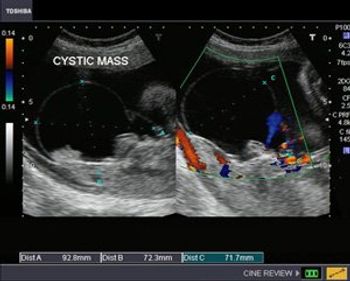Articles by OBGYN.net Staff

The first vaccine to prevent human papillomavirus (HPV) and cervical cancer has been licensed, and in future, vaccination may be routinely offered to 10–14 year old girls. HPV is a sexually transmitted virus and some parents may refuse consent for vaccination.

This case study shows a 26 week gestation with a cystic mass close to the sacrum.

With the goal of decreasing pain, hospital stay, infections, peritoneal post-surgical adhesions, incisional hernias and improving cosmetic results, gynecologists pioneered single port laparoscopy sterilizations [1].

A recent study on sleep disturbances in menopause shows a direct connection to the use of hormone therapy. Specifically, when women stop taking hormone therapy they experienced greater periods of poor sleep, waking up during the night, difficulty falling asleep, waking up to early and not feeling rested.



ACOG has recently released “Thromboembolism in Pregnancy” in the September 2011 issue of 'Obstetrics & Gynecology' to guide clinicians in the prevention, management and treatment of blood clots during pregnancy.

OBGYN.net Conference CoverageFrom American Association of Reproductive Medicine55th Annual Meeting of ASRM held conjointly with CFAS- Toronto, Ontario, Canada - September, 1999

A recent study by Katherine Roland and colleagues from the CDC has found that a majority doctors are still recommending yearly Pap tests to screen for cervical cancer.






A new recommendation by The American College of Obstetricians and Gynecologists urges physicians to offer mammography screening annually to women beginning at age 40 years. The College previously recommended that women aged 40 years receive mammograms every 1 to 2 years and women aged 50 years have mammograms annually.

The Edinburgh Postnatal Depression Scale (EPDS) was developed in 1987 for screening postpartum women in outpatient, home visiting settings, or at the 6-8 week postpartum examination. It has been utilized among numerous populations, including US women and Spanish-speaking women in other countries.




AMNIOTIC FLUID EMBOLISM
•AFE us thought to occur when amniotic fluid, fetal cells, hair, or other debris enter the maternal circulation.
• Ricardo Meyer (1926); reported the presence of fetal cellular debris in the maternal circulation
• Steiner and Luschbaugh (1941) described the autopsy findings of eight cases of AFE. Until 1950, only 17 cases had been reported
• AFE was not listed as a distinct heading in causes of maternal mortality until 1957 when it was labeled as obstetric shock
• Since then more than 400 cases have been documented, probably as a result of an increased awareness.

Proper functioning of the placenta-the life support system for the fetus-is crucial for a healthy pregnancy and healthy fetus. When placenta disorders arise, so does the likelihood of neurologic abnormalities in the fetus. Specifically, two population-based studies have shown an association between placental infarction and cerebral palsy (CP).


The CDC has released a report on the state of breastfeeding support in US hospitals, Maternity Practices in Infant Nutrition and Care, which found that less than 4% of US hospitals provided the full range of support a mother needs to be able to breastfeed, and only about one quarter of the hospitals support mothers and babies at discharge with the services they need, be it a follow-up visit, a phone call from hospital staff, or referrals to lactation consultants, WIC, and other important community support systems.









